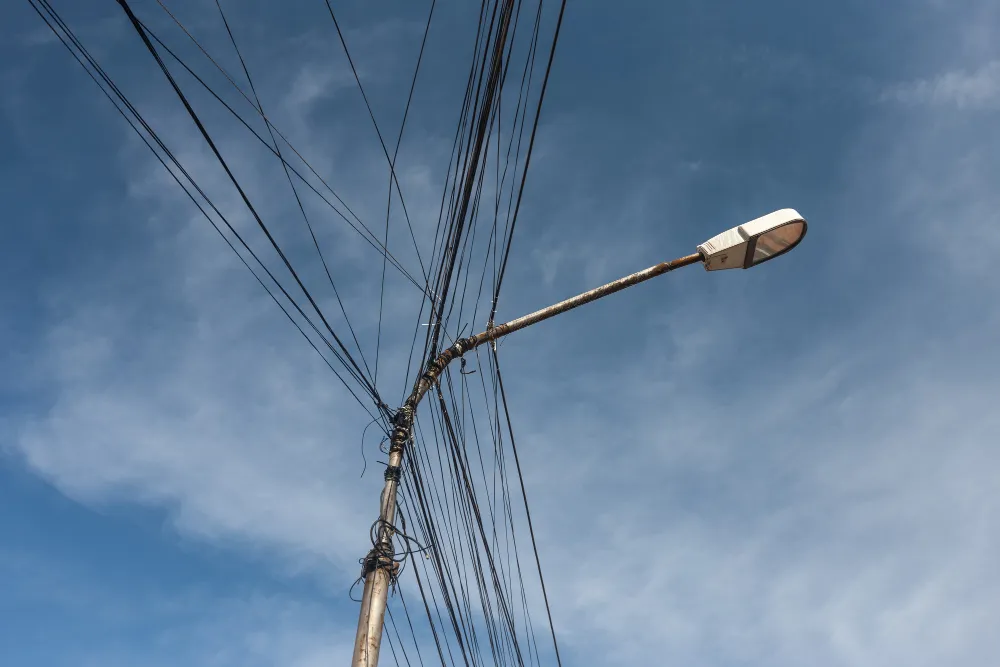HTLS (High Temperature Low Sag) technology – how to increase the capacity of power lines
 HTLS (High Temperature Low Sag) technology
HTLS (High Temperature Low Sag) technology
Increasing the capacity of power lines is one of the key challenges facing the National Grid System. This issue is particularly significant in the context of the continuous and dynamic development of renewable energy installations. Without modernisation and efficient utilisation of electrical grids, such development will be ineffective. HTLS technology offers crucial support in this process.
The power grid in Poland is significantly outdated. Some HV, MV, and LV lines are already over 50 years old, and often even older. As a result, they are not adapted to meet the demands of rapidly growing energy consumption, new sources of energy generation, or the realities of distributed energy systems. Although the expansion of the power grid and the construction of new lines are undoubtedly desirable, there is also potential to increase the ampacity of existing overhead lines. This can be achieved by installing high-temperature conductors.
What are high-temperature conductors and HTLS technology?
HTLS conductors are characterised by their ability to operate at elevated temperatures while maintaining a safe sag range. The term HTLS stands for High Temperature Low Sag Conductors. In Polish literature, they are commonly referred to as high-temperature conductors or HTLS conductors.
HTLS technology incorporates advanced solutions in conductor design. These conductors feature a core made of composite materials, incorporating oxide microfibres within an aluminium matrix or glass and carbon fibres embedded in a polymer resin. Their outer layer is made of aluminium zirconium alloy or fully annealed aluminium. A defining characteristic of HTLS conductors is their non-linear sag increase beyond the so-called knee-point temperature. This means that at higher temperatures, the sag increase is lower than at lower temperatures, ensuring safe sag range even at elevated operating temperatures. HTLS conductors can operate at temperatures exceeding 150°C, and even up to 250°C, which is nearly twice or more than three times higher than the permissible operating temperature of traditional aluminium-steel conductors. Their ability to handle high currents makes them ideal for use in high-voltage networks.
Types of HTLS conductors by material composition
There are various types of HTLS conductors, including:
- Aluminium Conductor Composite Core (ACCC)
- Aluminium Conductor Composite Reinforced (ACCR)
- Aluminium Conductor Fibre Reinforced (ACFR)
- Aluminium Conductor Steel Supported (ACSS)
- Gapped Thermal-Resistant Aluminium Alloy Conductor Steel Reinforced (GTACSR)
- Thermal-Resistant Aluminium Conductor Invar Reinforced (TACIR)
- Thermal-Resistant Aluminium Conductor Steel Reinforced (TACSR)
These conductor names are derived from English and correspond to their structure and material composition. They may feature steel cores (TACSR, GTACSR, ACSS), composite cores (ACCC, ACCR), carbon fibre cores (ACFR), or invar cores (TACIR). Thermally resistant aluminium is also used in their construction. Depending on the type, their operating temperatures can reach 150°C, 180°C, 210°C, 230°C, or even 240–250°C.

Modernisation of power lines using HTLS technology
The process of modernising power lines can vary in scope. It may involve replacing insulators, raising the height of utility poles, or replacing conductors. The modernisation of HV lines using HTLS technology primarily involves replacing existing conductors with ones suitable for higher-temperature operation. If the structural elements of a line are in good condition and only the conductors have a low maximum operating temperature, modernisation can be limited to conductor replacement. This allows the overhead line to achieve a significant increase in thermal rating quickly and without substantial changes to the line’s structure.
In Poland, there are still old lines in operation which were built without appropriate design reserves for sag and which are fitted with conductors capable of operating at a maximum temperature of 40°C or 60°C. These lines should be prioritised for modernisation. HTLS conductors should be used especially in areas where a significant increase in transmission capacity is required. The goal of modernisation is to increase line capacity, reduce grid losses, and ultimately improve the quality and reliability of electricity supply across the entire system.